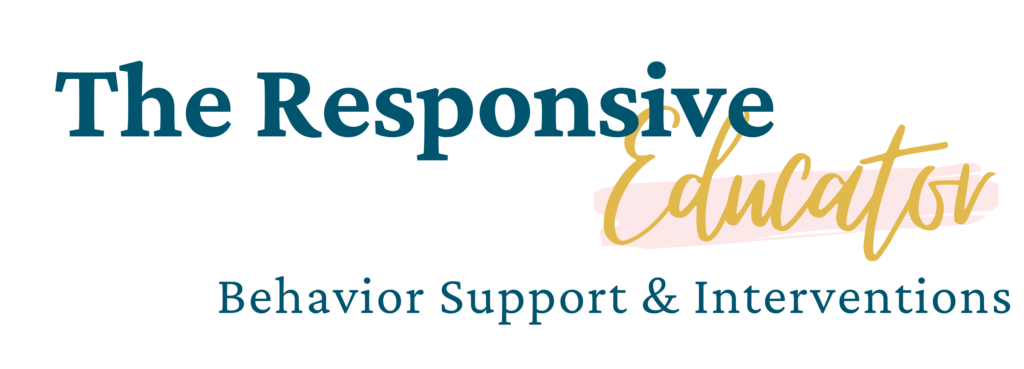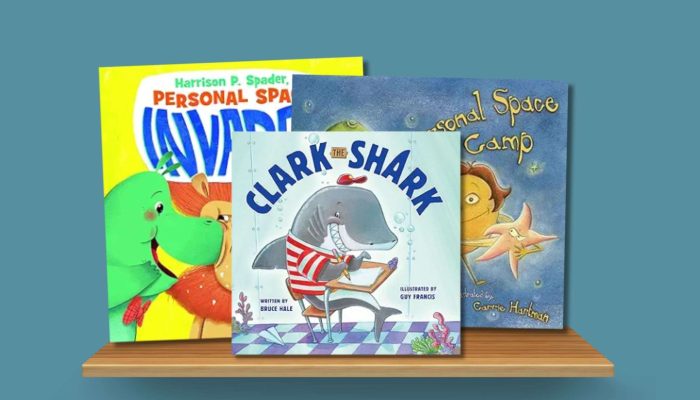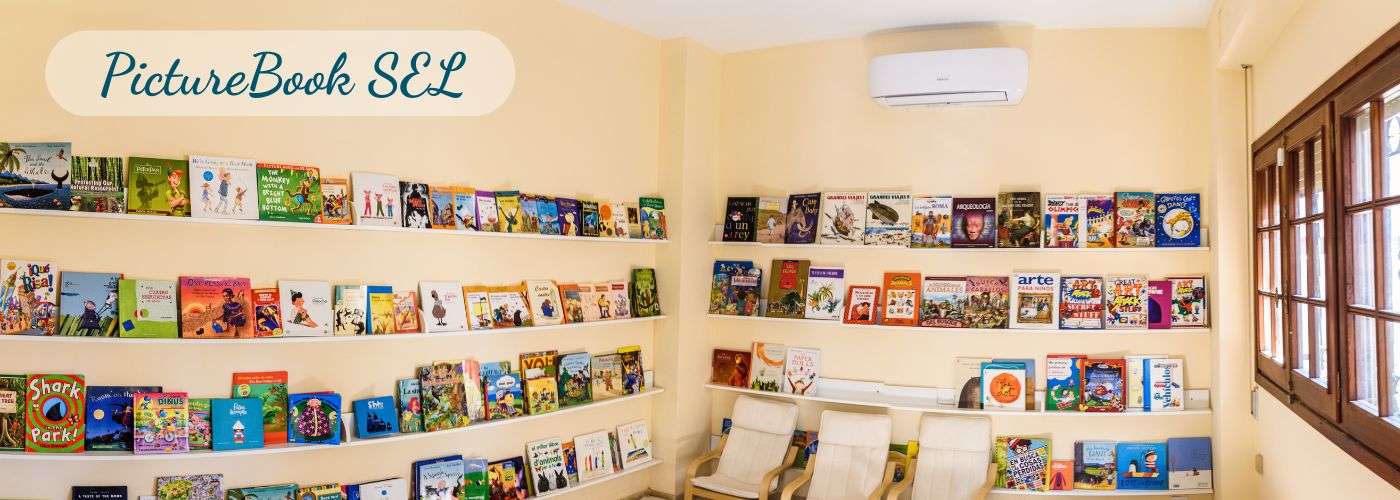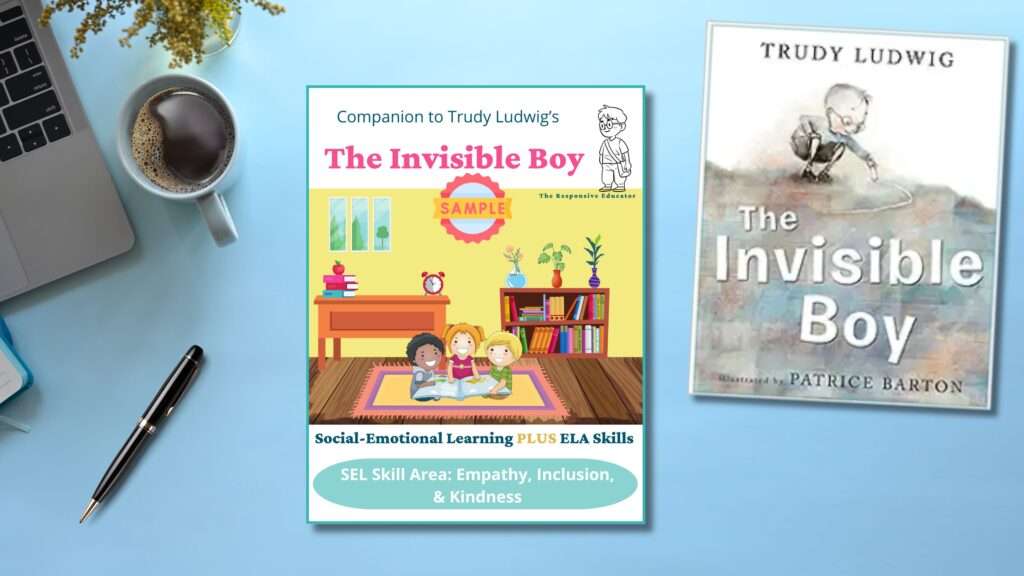


For many teachers, managing personal space issues in the classroom is a common challenge. Some students may have difficulty recognizing when they’re too close to others or understanding the importance of respecting others’ boundaries, which can lead to disruptions and even conflict. Teaching students to understand and respect personal space is more than just classroom management; it’s a valuable social skill that helps create a more positive and comfortable learning environment.
Storybooks can be an effective tool for teaching these skills. Through relatable characters and engaging storylines, books can help students see the impact of personal space on friendships and classroom harmony. In this post, you’ll find a selection of books designed to help students grasp the concept of personal space and practice empathy, creating a foundation for respectful, mindful interactions. Links are included where possible to make it easy to find these resources for your classroom.
For some of the books on this site, I’ve created interactive read-alouds designed to enrich their use in the classroom. These resources include discussion questions, activities, and prompts that actively engage students and deepen their understanding of key themes. More interactive read-alouds are on the way! If there’s a specific book you’d like to see included, please reach out using the contact form at the bottom of the page.
For more insights on supporting social-emotional learning (SEL) and incorporating interactive read-alouds into your teaching, explore these posts:
(As an Amazon affiliate, I earn a small commission if you purchase products through the links on my posts. Thank you for your support!)
Summary: Harrison P. Spader, Personal Space Invader by Christianne C. Jones is a lively and relatable story about a young boy named Harrison who struggles with respecting personal space. He loves high-fives, hugs, and being close to others, but his enthusiasm often leads him to invade others’ space. With the help of the “Space Saver” rhyme, Harrison learns to keep a respectful distance, helping him build better relationships with his peers and family. This book, part of the Little Boost series, tackles the important topic of personal boundaries using humor and memorable characters.
Description: With vibrant illustrations and a humorous storyline, Harrison P. Spader, Personal Space Invader offers young readers a clear and engaging way to understand and practice personal space. It addresses the challenges many children face when learning about boundaries, providing a concrete rhyme that kids can use in real-life situations. The story’s structure and visuals make it especially effective for classroom discussions, parent-child reading time, or social skills lessons, making it a versatile tool for teachers, parents, and caregivers.
Reviews and Considerations: The book has received positive feedback from parents, teachers, and caregivers, who praise it as an accessible way to introduce personal space concepts to young children. Many find the “Space Saver” rhyme particularly useful, as it’s easy for kids to remember and apply. While most reviewers highlight its effectiveness for children with personal space challenges, a few mention that the storyline’s humor and engaging illustrations make it enjoyable for all young readers. Some reviewers felt the book could be more direct in its language for younger audiences but still find it valuable as a conversation starter.

Summary: Clark the Shark by Bruce Hale follows the energetic Clark, a shark bursting with enthusiasm that often overwhelms his classmates and disrupts school routines. Although Clark means well, his boundless excitement becomes a problem when it bothers others. Mrs. Inkydink, his patient teacher, helps Clark discover strategies to manage his impulses, teaching him when to tone things down. The story captures the journey of a spirited character learning impulse control and social boundaries, making it relatable for young readers who may struggle with similar challenges.
Description: This humorous, rhyming story brings readers into a bustling school setting where Clark’s enthusiasm sometimes crosses boundaries, impacting his friendships and learning environment. Through fun interactions and colorful illustrations, Clark the Shark addresses topics of self-regulation, patience, and empathy in a way that resonates with children. Young readers are entertained by Clark’s “zing, bang, and BOOM” approach to life while subtly picking up cues on how to balance excitement with self-control. This book is an excellent tool for social-emotional learning, particularly for students who find it hard to control their energy.
Reviews and Considerations: Clark the Shark is widely praised for its engaging rhythm, relatable storyline, and vivid illustrations. Parents, teachers, and caregivers appreciate the story’s lighthearted approach to managing big emotions. Many reviewers find the book an ideal read-aloud for young children, noting that it’s a favorite in both classroom and home settings. Some parents mention that the rhymes and repetition help children remember Clark’s strategies for self-control, making it useful for reinforcing these skills outside the story. A few reviewers note that Clark’s approach might be especially beneficial for children who display ADHD tendencies or struggle with impulse control, as it offers a positive model without being overly prescriptive.

Summary: I’m In Charge of Me! by David Parker is a valuable book for young children learning the foundational skills of self-regulation and personal responsibility. It introduces the concept of self-control in a way that resonates with kids, making it perfect for the beginning of the school year as students start building routines and learning social expectations. Through simple language and relatable examples, the book reinforces that each child has the power to make choices about how they feel and behave.
Description: This book uses straightforward language and clear examples to illustrate the importance of self-regulation for young readers. In a variety of common situations, children learn to recognize and manage their emotions and reactions, realizing that they are “in charge” of their choices. Parker’s approach empowers kids to feel capable of controlling their actions, which is essential for personal growth and development. I’m In Charge of Me! serves as a guide for both self-awareness and self-control, helping kids understand that their feelings are valid and manageable.
Reviews and Considerations: Parents and teachers alike praise I’m In Charge of Me! for its clear messaging and practical approach to teaching emotional regulation. The book is appreciated for its simplicity and directness, which make it accessible for children facing changes, challenges, or uncertainties. In particular, caregivers find it valuable for children dealing with difficult adjustments, such as the loss of a family member or starting school. Many mention that the series also includes other titles, such as I Am Positive, which further support positive mindset growth, making it a useful resource for a range of social-emotional learning needs. This book is well-suited for young children, reinforcing the message that they have the power to control their emotions and reactions in any situation.


Summary: Personal Space Camp by Julia Cook follows the adventures of Louis, a lively child who learns the importance of respecting others’ personal space. Confused about what “space” really means, Louis is excited when his principal invites him to “Personal Space Camp,” only to realize it’s not the outer space adventure he expected. Through engaging exercises and hands-on activities like using hula hoops and body tracing, Louis begins to understand physical boundaries and how to be more considerate of others.
Description: Julia Cook uses humor and an accessible storyline to tackle the often-challenging topic of personal boundaries. Louis’s character makes the lesson approachable and relatable for children, as they follow his journey from misunderstanding to awareness. The book includes creative activities that educators and parents can incorporate to reinforce the concept, like the “space bubble” exercise with hula hoops. The witty narrative and interactive format make it an ideal choice for classrooms and social skills groups.
Reviews and Considerations: Personal Space Camp receives high praise from parents, teachers, and counselors for effectively addressing a common social issue in elementary settings. Many reviewers highlight that the book engages children with humor, making a complex topic easy to understand and remember. Educators particularly appreciate the supplemental activity guide, which provides practical tools for reinforcing the lesson in group settings. Parents note the book’s ability to spark meaningful discussions, especially helpful for kids with boundary challenges or sensory processing needs. While some feel the humor might confuse younger readers, most find it to be a valuable resource that both entertains and teaches critical social skills.

Summary: Teach Your Dragon About Personal Space by Steve Herman is part of the popular “My Dragon Books” series, following Diggory Doo as he learns to respect others’ personal boundaries. Through a blend of humor and heartfelt lessons, Diggory Doo learns when it’s okay to hug and when it’s important to give others space. This story provides young readers with concrete examples, using a lovable dragon to illustrate boundaries, appropriate distance, and respecting others’ comfort levels.
Description: This book is a valuable tool for teaching young children about personal space in a gentle, engaging way. Herman approaches the topic with easy-to-understand scenarios and uses relatable examples to help children develop social awareness and understand others’ boundaries. The story’s rhyming style and fun illustrations make it an ideal read-aloud book for classrooms, homes, and therapy sessions, while also offering adults language to reinforce boundaries in day-to-day interactions. The story covers a range of social scenarios, from giving hugs to talking at a respectful distance, making it versatile and applicable for young readers.
Reviews and Considerations: Parents and educators highly recommend this book for its accessible approach to teaching personal boundaries. Many parents found it effective for young children who might be overly affectionate or lack awareness of social cues, noting that the dragon character helped kids engage with and retain the message. Educators and therapists, especially in special education settings, report that the book provides a gentle way to reinforce social-emotional skills without being too direct or preachy. However, some readers mentioned that it might not be as effective for very young children due to some complex wording, suggesting it might best suit ages 4 and up. Overall, Teach Your Dragon About Personal Space is a well-loved addition to the My Dragon series, ideal for children who are learning about respecting personal boundaries in a fun and memorable way.



Sign up now to receive a free sample of “The Invisible Boy” Interactive Read-Aloud Lesson Plan! This comprehensive resource includes engaging activities designed to help your students develop empathy and inclusion.
By signing up, you will also join our newsletter, where you’ll receive:
Join our community of educators dedicated to fostering social-emotional growth in the classroom!

( ) = Coming Soon
Body Safety & Personal Boundaries
(Conflict Resolution)
(Compromise / Cooperating)
Feelings & Emotional Awareness
(Sensory Processing)
(Sharing)
(Speaking Politely)
(Teasing & Bullying)
(Trauma Recovery)